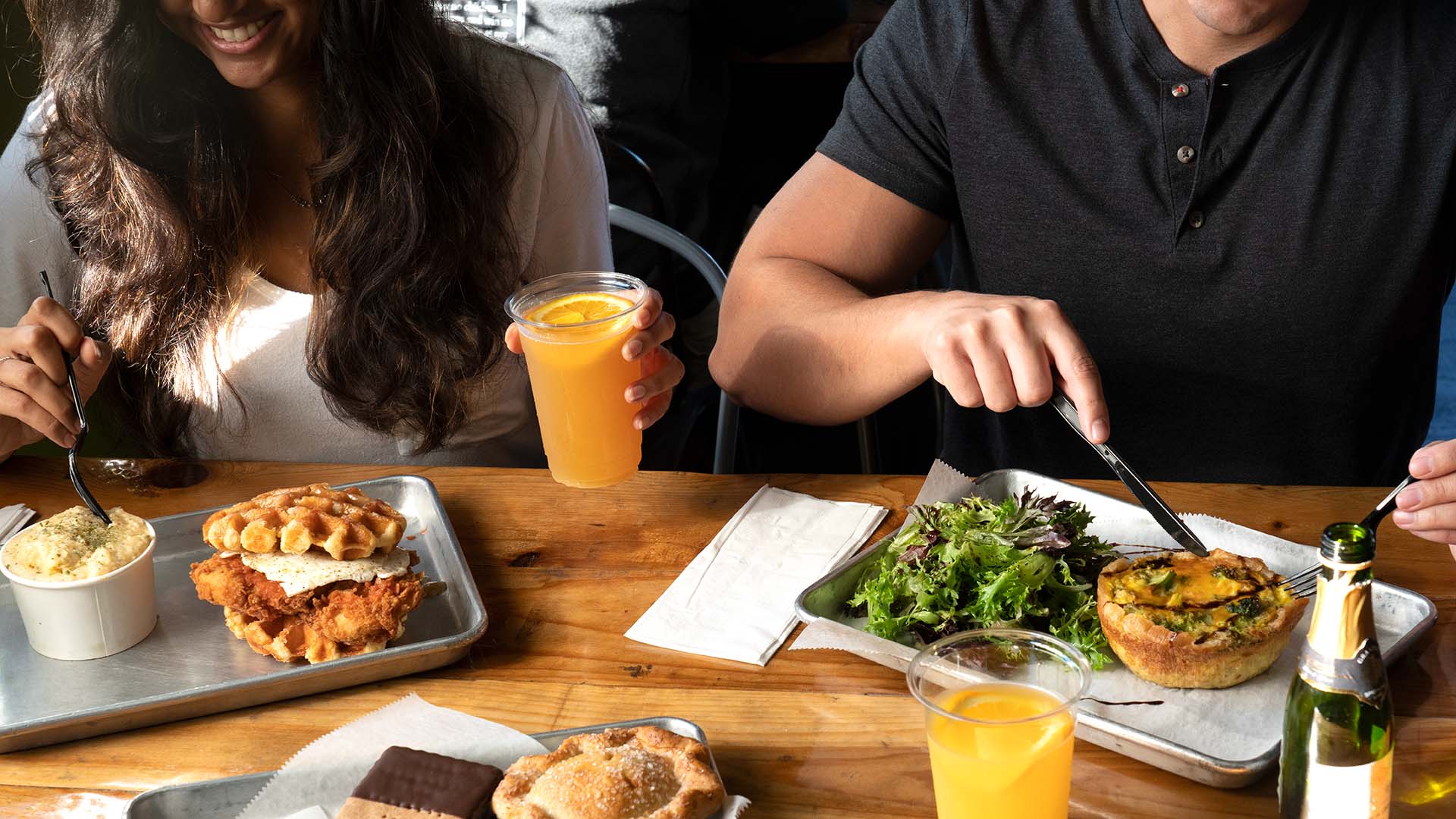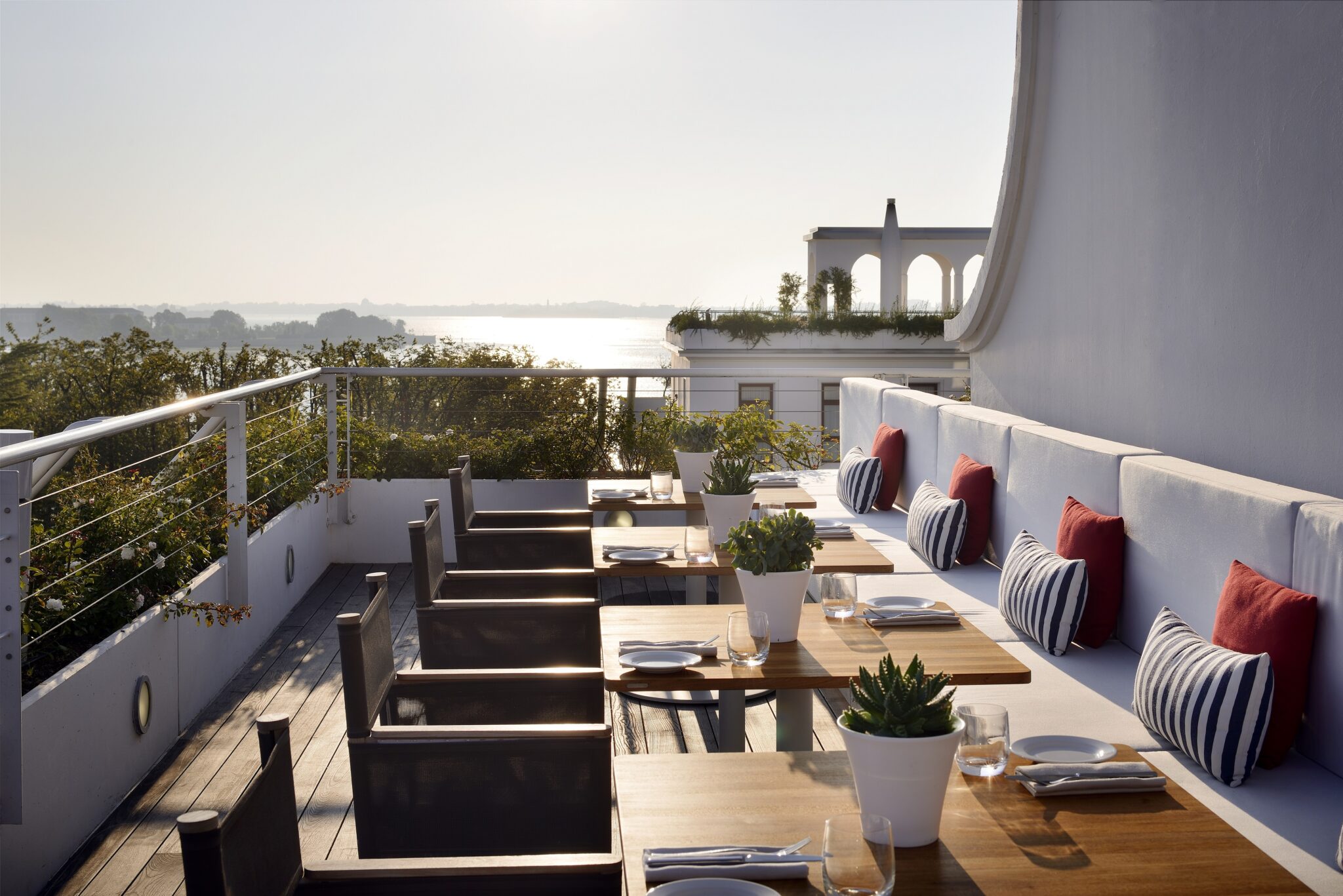
Matt Goulding, publisher of Roads and Kingdoms and author of “Grape Olive Pig,” discusses Spain’s food culture. (Photo: Ryan Kobane | Courtesy of Roads and Kingdoms)
Eat + DrinkMatt Goulding on Spanish Food Culture, Its Underrated Regions and the Ultimate Hangover Food
By Valerie ConnersMatt Goulding, publisher of Roads and Kingdoms and author of “Grape Olive Pig.” (Photo: Ryan Kobane | Courtesy of Roads and Kingdoms)
“You’ll find the history of Spain in the perimeter of a paella pan,” says Matt Goulding — and he would know. The publisher of the award-winning Roads and Kingdoms website is also the author of “Grape, Olive, Pig,” a mouthwatering ode to Spanish food culture. “Olive oil arrived with the Romans, saffron and rice came from Moorish influences, and the incredible Mediterranean veggie culture — it’s all there.”
To Goulding, understanding food’s culture and history is key to understanding place — and he’s found few spots more suitable to investigating that connection than Spain.
“I’m less interested in telling you where to eat while you’re traveling,” says Goulding. “It’s about sharing broader information that makes your travel experience more meaningful.”
Goulding’s belief also inspired his first book, “Rice, Noodle, Fish,” which delved into the nuances of Japanese food culture. Both books are, fittingly, published via chef and TV personality Anthony Bourdain‘s HarperCollins book line. In fact, Bourdain was one of Roads and Kingdoms’ earliest cheerleaders and an eventual investor and editor of the site.
“What Roads and Kingdoms in general, and these books, share with Bourdain’s shows is that he might go to Spain, but he’s not interested in telling you where to eat in San Sebastian,” Goulding points out. “The more important thing is the conversation that’s happening around the table — that’s what we’re trying to communicate.”
Goulding sat down with Marriott TRAVELER to talk about his understanding of Spain’s food culture, the region he’s found most unexpectedly delicious, and the secret to dining like a local in Barcelona.
In what way does food, or the experience of dining in Spain, define Spain’s culture?
In Spain a meal is not about filling your belly, it’s about filling the cultural experience of sharing moments at your table with friends and family. You can say that about many cultures.
What’s special in Spain is that the pace of a meal is extremely relaxed. It can go on for many hours, and after your meal you have the sobremesa, where you may have coffee, stick around and have a conversation, share stories — the kinds of things a dinner table is made for.
There’s no waiter hovering over your shoulder looking at you nervously. It doesn’t exist even in the nicest restaurants. You feel comfortable extending a meal as long as you want.
Plus there’s the eating schedule. Spain is known for its late lunch culture; some say they eat at 2 p.m., but it’s really 3 p.m., and dinner is light and late. If you walk into a restaurant at 8 p.m., you’ll be alone or with tourists. My first time in Spain I thought no one was eating dinner in this country.

Spain’s regions obviously differ greatly. Is there a particular region you didn’t expect to be smitten with but were?
The most impactful regional experience I had was in Asturias [northern Spain]. I first went with [Chef] José Andrés, who’s a native son of the region.
Asturias doesn’t get a lot of play outside of Spain, but what you have there is a convergence of mar y montaña [land and sea] with some of Spain’s highest peaks and one of its most gorgeous coastlines, which happens to be pregnant with some of the best fish in Europe. Then you go into mountains for slow simmered meat stews, wild game.
Here you also have sidrerías, the cider houses, where much of the culture of Asturias is generated. You’re there drinking amazing cider, but really you’re celebrating, eating food and solving the day’s problems.
Travel out of your way to Asturias and you’ll be richly rewarded.
You’re based in Barcelona but travel frequently. When you’re on the road, what do you yearn for from Spain?
The first thing I always miss is jamón. You have to recognize the jamón and pork culture in Spain is unrivaled anywhere in the world. Jamón is the finest piece of protein on the planet and one of the most extraordinary expressions of alchemy.
It’s important to remember there’re quite a few classes of jamón, and there are subtle but important differences. The highest expression is jamón ibérico from fat-bellied Iberico pigs who grazed on an acorn diet in the last three months of their lives. You have some of the sweetest, luscious intramuscular fat you’ll find.
Where should one indulge?
In Barcelona you can go to La Boqueria [Market], but the best stuff is at Vila Viniteca. They have the Joselito jamón ibérico de bellota as well as all the cured pork products you can ask for. Build a picnic and enjoy.
Is a picnic a choice way to enjoy a Spanish meal?
There may be no better place in the world to build a picnic because of Spain’s pork culture. And the cheese culture is also potent — you have manchego, but also the regional cheese culture is really strong. Go to the first market you can find and try something new like Idiazabal or Garrotxa from northern Catalonia.
Putting together a picnic is as good as closing your eyes and pointing. Then grab a bottle of cava — my favorite thing to drink in Spain.
Speaking of drinking, you wrote about doing a hangover tapas crawl in Barcelona. What’s your ultimate Spanish hangover food?
I’m a big fan of tortilla de patatas [potato omelete]; I feel like it’s a great booze sponge. It works for breakfast, it works for lunch and it’s a nice go-to dish, especially at places that make them to order. There’s a place in Barcelona, Cal Pep, that has the best tortilla. It’s loosely set, weeps out on plate and it’s a beautiful thing.
What advice would you give to someone traveling to Spain who wants to dine like a well-fed local?
First, the most beautiful parts of any city are the worst places to eat. Restaurants in Las Ramblas in Barcelona and Madrid’s Plaza Mayor are set up to relieve you of your money with as little energy as possible. Restaurants there have no problem serving you frozen paella — it’s like a plague.
If you make the effort to go further from the city center, you’re rewarded with good food and the good service a local’s going to get.
To eat in Barcelona off the beaten path, head to the Poble Sec neighborhood. [There are] small tapas bars on Calle de Blai. They’re the kinds of places where you can enact the Spanish fantasy of eating many dishes. There’s also Gracia, an interior neighborhood where everything is walkable, high quality and very Catalan.
The tapas culture is a moveable feast. It means going to multiple places for very specific dishes. Stop here for one thing; then you go down the road and get another. Extend your meal into a multi-hour and multi-stop dinner.







